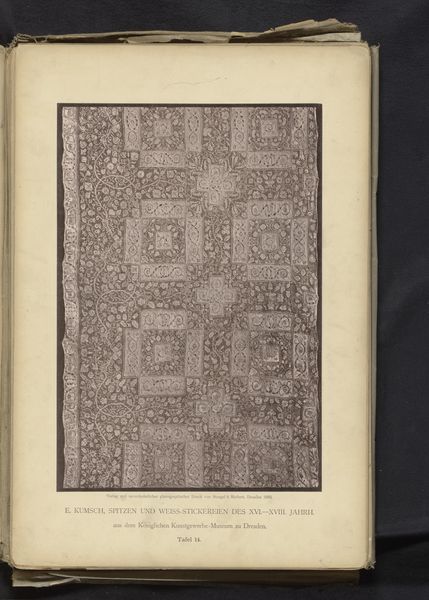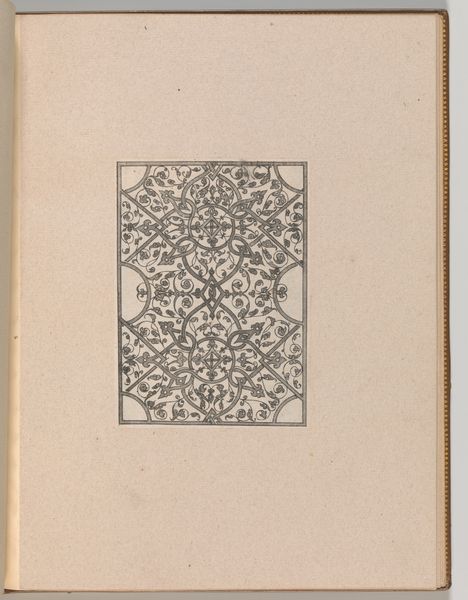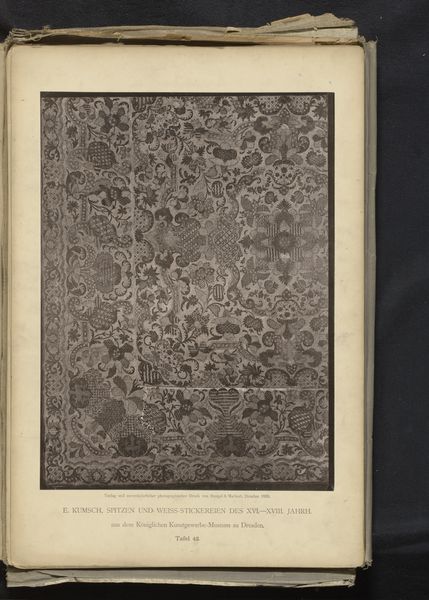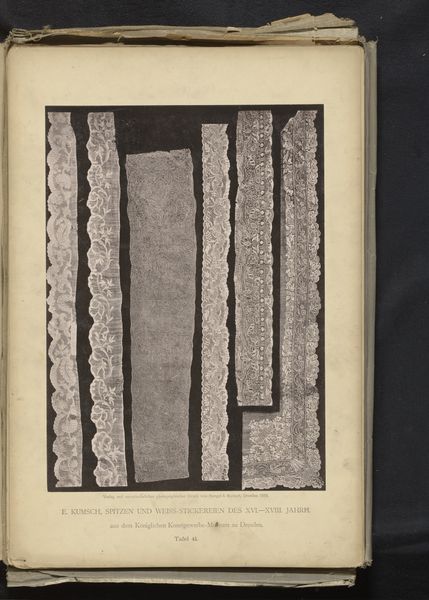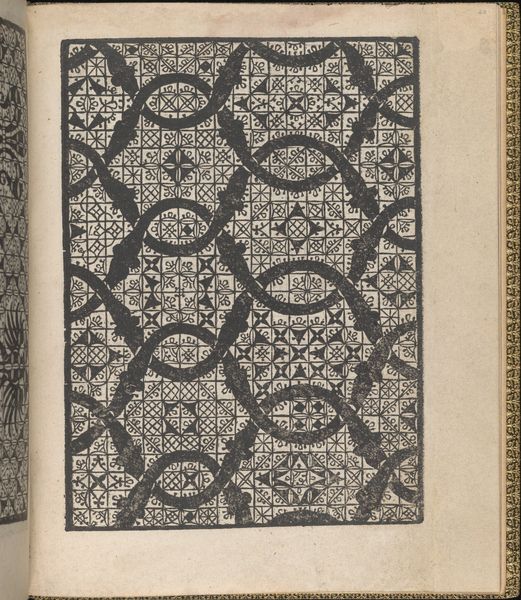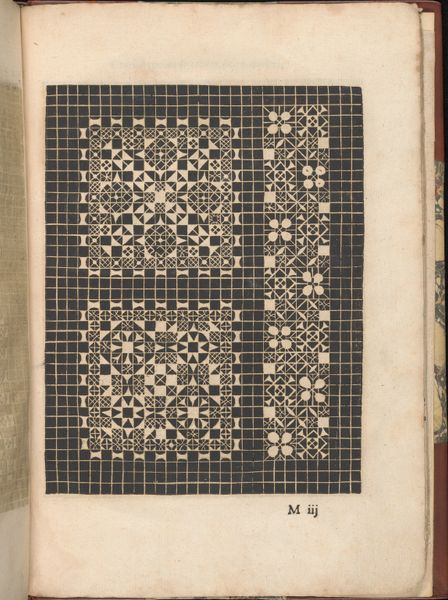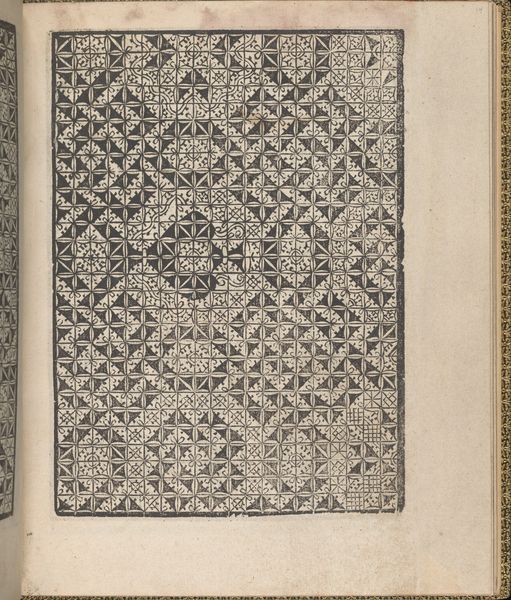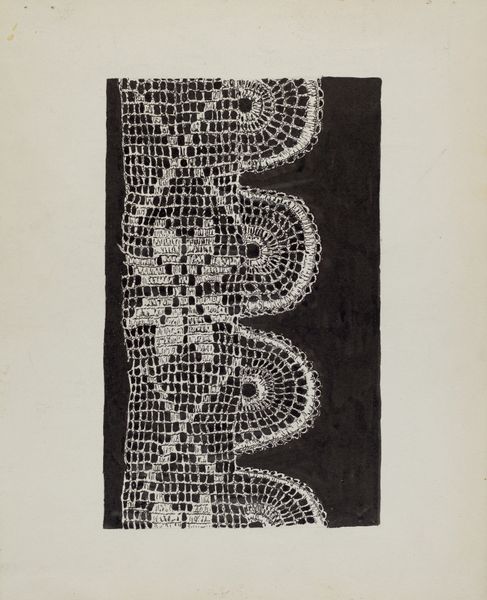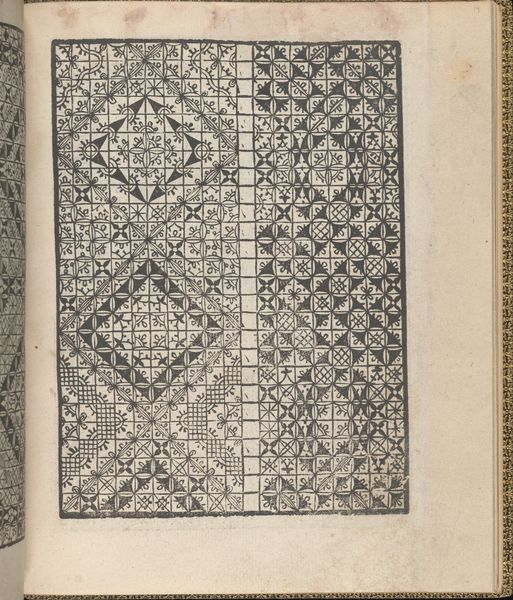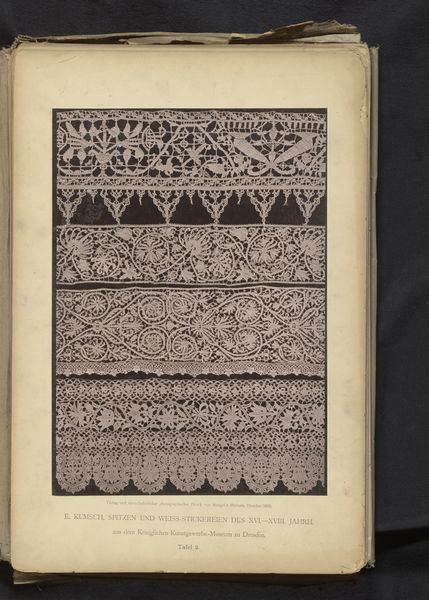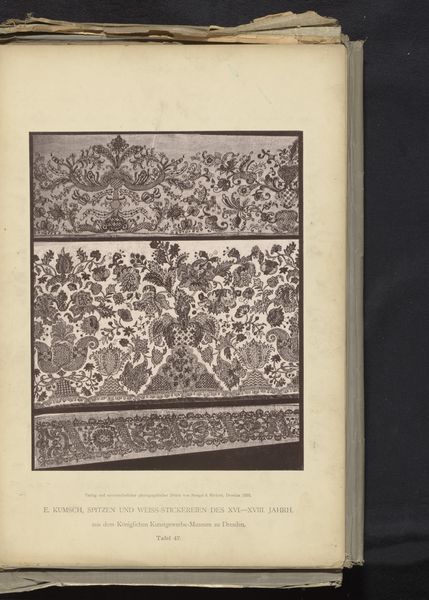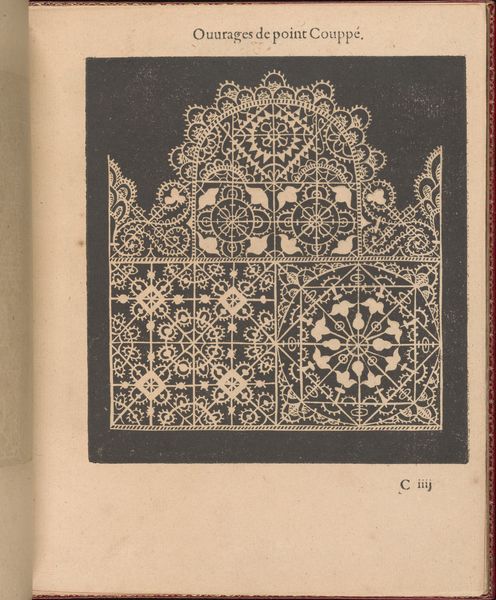
Zes vierkante stukken 17de-eeuws Italiaans kant uit de collectie van het Kunstgewerbemuseum in Dresden, Duitsland 1888
0:00
0:00
#
aged paper
#
toned paper
#
homemade paper
#
sketch book
#
paper texture
#
personal sketchbook
#
folded paper
#
paper medium
#
sketchbook art
#
columned text
Dimensions: height 321 mm, width 255 mm
Copyright: Rijks Museum: Open Domain
Editor: This is "Zes vierkante stukken 17de-eeuws Italiaans kant uit de collectie van het Kunstgewerbemuseum in Dresden, Duitsland," from 1888 by an anonymous artist. It appears to be a study or perhaps a printed page showing six square samples of lace. They have a faded beauty about them. What strikes you most about this piece? Curator: Immediately, I’m drawn to the inherent symbolism embedded within lace. Think about it – the delicate weaving, the intricate patterns…lace has, for centuries, represented status, skill, and femininity. These aren't just pretty patterns; they are visual markers of identity and cultural value. Do you see how the different patterns might suggest different social classes or even specific regions? Editor: I hadn't thought of that. Some patterns do look more elaborate than others. Almost like a code. Curator: Precisely! The labor-intensive process of creating lace elevates it beyond mere decoration. It becomes a tangible embodiment of time, dedication, and a deep connection to tradition. Even this printed reproduction carries a whisper of that history. Consider, too, how geometric shapes often act as cultural signifiers. Notice the repetition, the symmetry…does it suggest anything about the society that produced it? Editor: Well, the symmetry suggests order and perhaps even some established hierarchies in pattern design. Curator: A keen observation. Think about what it meant to possess or wear such delicate craftsmanship. Beyond aesthetics, the lace signified an individual's participation in a specific social order. It communicated wealth, taste, and adherence to certain ideals of beauty. Editor: I see the work in a new light. Now when I look at the image, I appreciate how each piece seems to carry so much history within it. Curator: And that historical resonance, the weight of cultural memory, is what continues to captivate us, centuries later. We are interpreting both image and context and creating new connections between visual patterns, ideas, and experiences.
Comments
No comments
Be the first to comment and join the conversation on the ultimate creative platform.
